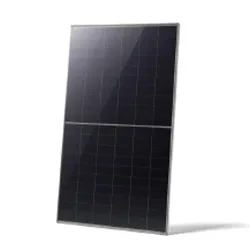Benefits and Applications of Dual Glass Solar Panels in Renewable Energy Solutions
The Advantages of Dual Glass Solar Panels
In the quest for sustainable energy solutions, solar power stands out as one of the most viable options for both residential and commercial applications. Among the various types of solar panels available on the market, dual glass solar panels have emerged as a significant innovation, offering numerous advantages over traditional solar panel designs. This article will explore the benefits of dual glass solar panels and their potential to revolutionize the solar industry.
First and foremost, dual glass solar panels are known for their durability and longevity. Unlike traditional solar panels, which typically feature a glass front and a polymer backsheet, dual glass panels are constructed with glass on both the front and the back. This design not only strengthens the panels but also provides enhanced protection against environmental factors such as moisture, dust, and extreme temperatures. As a result, dual glass solar panels are less susceptible to degradation, which can significantly extend their lifespan. Many manufacturers offer warranties of 25 years or more, demonstrating confidence in their products' durability.
Another notable advantage of dual glass solar panels is their improved efficiency. These panels often feature advanced cell technology and design that maximizes light absorption. The glass back allows for light to enter from both sides, which can enhance energy production, especially in installations where the panels may receive indirect sunlight or reflection from nearby surfaces. This feature can lead to higher overall energy outputs compared to traditional mono or polycrystalline panels, making dual glass panels an efficient choice for homeowners and businesses seeking to optimize their energy systems.
Furthermore, dual glass solar panels are also designed with aesthetics in mind. Their sleek, modern appearance can appeal to those who are concerned about the visual impact of solar panels on their property. The all-glass design can blend more seamlessly with contemporary architectural styles, providing an attractive alternative for residential and commercial installations. This can help to foster greater acceptance of solar technology in various communities where visual appeal is a significant consideration.
dual glass solar panels

Additionally, the dual glass construction provides a level of environmental resilience that can be particularly beneficial in harsh climates. Whether it’s heavy snowfall, high winds, or extreme heat, these panels are engineered to withstand a range of weather conditions. Their robust design minimizes the chances of physical damage, such as cracking or delamination, ensuring that energy production remains consistent over time regardless of environmental stresses.
One of the significant concerns with traditional solar panels involves the use of hazardous materials in their construction. Dual glass solar panels are often crafted with a focus on reducing the environmental impact, as they can be designed to be recyclable at the end of their lifespan. This feature aligns with the broader goal of promoting circular economy principles within the solar industry, emphasizing sustainability not just in energy production but also in manufacturing practices.
Finally, as the solar market continues to expand, the increased adoption of dual glass solar panels could contribute to enhanced energy independence. By improving energy output and offering longevity, these panels can enable more households and businesses to generate their electricity, thus reducing reliance on fossil fuels and contributing to a decrease in greenhouse gas emissions.
In summary, dual glass solar panels present a forward-thinking solution in the solar energy market, boasting durability, efficiency, aesthetic appeal, and environmental resilience. As technology continues to evolve, embracing such innovative designs can lead to a more sustainable future, benefiting both consumers and the planet. As we strive for energy independence and environmental responsibility, dual glass solar panels may well hold the key to unlocking a cleaner, greener future.
-
String Solar Inverter: The High-Efficiency Solution for Smart Solar EnergyNewsJul.14,2025
-
Revolutionizing Rooftop Energy with the Power of the Micro Solar InverterNewsJul.14,2025
-
Power Independence with Smart Off Grid Solar Inverter SolutionsNewsJul.14,2025
-
On Grid Solar Inverter: Powering the Future with Smart Grid IntegrationNewsJul.14,2025
-
Monocrystalline Solar Panels: High-Efficiency Power for the Future of Clean EnergyNewsJul.14,2025
-
Bifacial Solar Panel: A Smarter Investment for Next-Generation Energy SystemsNewsJul.14,2025







